I'm busy, detail oriented, cost conscious and highly selective as to whom works in and/or around my home. This is a service based company that actually provides superior service. Don't waste anymore time... call them. ~ a satisfied customer for three years.
Plant, Soil & Tree Health in Arizona
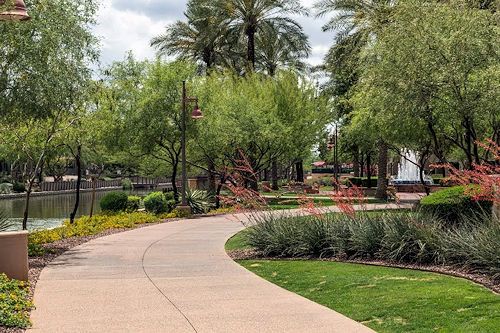
The landscaping around your house or business increases its curb appeal and contributes to the unique ecosystem that makes our state such a beautiful place to live.
While every property owner desires a lush, green lawn that is filled with blossoming plants, you must know that Arizona landscaping requires an understanding of how the arid climate and soil makeup affect plant health to achieve this goal.
Whether you prefer the sleek minimalist look of xeriscaping or desire a flowerbed that rivals the local botanical garden, you can use this guide to learn how to partner with our professional lawn care service to achieve the southwest landscape of your dreams.
Keeping Plants Healthy in
Your Arizona Landscaping
 A beautiful landscape begins with careful planning. Ideally, the plants that you choose for your Arizona property should be drought-resistant and capable of surviving in high temperatures.
A beautiful landscape begins with careful planning. Ideally, the plants that you choose for your Arizona property should be drought-resistant and capable of surviving in high temperatures.
You should also include several different types of plants where each serves a role in helping the others thrive. For instance, groundcovers help to stabilize the soil in the lawn while taller plants can provide shade to delicate flowers.
As you decide which plants to include in your landscape, consider these common types along with the types of care that they require.
Native Shrubs
Next to trees, shrubs are one of the main focal points in a landscape design, and you can use shrubs as accents or to create borders along your property. Shrubs can also be used as screens to create privacy around patios and reflection areas in a garden.
Native shrubs such as the Arizona rosewood and the Desert Hackberry tend to grow best since they are already adapted to the environment. Keep in mind that these shrubs can grow as high as 10-feet tall and need full sun, which affects their placement.
 Flowering shrubs such as the Firecracker Bush add a pop of color to landscapes, but they may need special care when they are first planted to make sure that the soil stays well drained but evenly moist. In fact, you will find that this is a common rule of thumb to follow when you first install a new landscape.
Flowering shrubs such as the Firecracker Bush add a pop of color to landscapes, but they may need special care when they are first planted to make sure that the soil stays well drained but evenly moist. In fact, you will find that this is a common rule of thumb to follow when you first install a new landscape.
New plants typically require more frequent watering until they are well established. Shrubs that fail to grow or that develop yellowed leaves require professional care to help you establish a watering schedule that allows them to thrive.
Since shrubs are also vulnerable to damage from pests, regular lawn inspections keep them healthy.
Ground Covers
These plants are used to create visual interest in your landscaping, and you can choose them as an alternative to grass for covering bare areas.
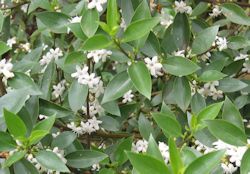 For instance, Myoporum is a trailing plant that requires low to moderate watering and works well for covering large areas of the ground. Alternatively, plants such as the Red Spike Ice Bloom grow in clumps, but they blossom with bright flowers that highlight specific areas of your landscape.
For instance, Myoporum is a trailing plant that requires low to moderate watering and works well for covering large areas of the ground. Alternatively, plants such as the Red Spike Ice Bloom grow in clumps, but they blossom with bright flowers that highlight specific areas of your landscape.
When including ground cover plants, keep in mind that they may all have very different recommendations for their care. For this reason, you may need to use strategies such as direct plant pest control or a targeted watering system to give each plant the care that it needs.
Cacti and Succulents
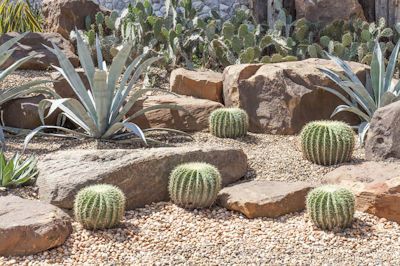 Cacti are icons for southwestern landscapes, and tall varieties such as the Saguaro make a dramatic impact when they stand on large properties.
Cacti are icons for southwestern landscapes, and tall varieties such as the Saguaro make a dramatic impact when they stand on large properties.
Smaller types, such as the Beavertail Prickly Pear, grow beautifully colored flowers that add interest to the landscape.
An Arizona landscape design is also never fully complete without succulents such as yucca and agave plants.
Caring for cacti and succulents is fairly simple compared to other types of plants since they are already adapted to a desert climate. Yet, they do require special types of soil and large amounts of sunlight to thrive.
The biggest mistake most property owners make is overwatering cacti and succulents, and the water required for different plants is not always as it seems.
For instance, taller cacti such as the Saguaro need less watering than small succulents because they are made to retain water throughout drought conditions.
Soil Optimization Needs and Strategies for Tree and Plant Care
 When watering and fertilization strategies fail to keep trees and plants healthy in your landscaping, soil optimization is often required to get to the root of the problem. Arizona soils are known for having a high clay content that makes it very alkaline, meaning that the soil has a pH level above seven.
When watering and fertilization strategies fail to keep trees and plants healthy in your landscaping, soil optimization is often required to get to the root of the problem. Arizona soils are known for having a high clay content that makes it very alkaline, meaning that the soil has a pH level above seven.
Since most trees thrive in soil with a lower pH level, treatments are often needed to restore the balance. When a treatment is needed, adding organic matter to the soil helps to reduce the alkalinity while also adding the nutrients that trees and plants need to grow.
High saline, or salt build up, in soil has a dehydrating effect on plants. If this is an issue in your landscaping, then you may notice that the leaves on the plants tend to turn yellow and curl. They may also show signs of low water despite a regular watering schedule.
Note: Irrigating the ground to flush out the salt content often treats high salinity in soil.
Compacted Soil Problems
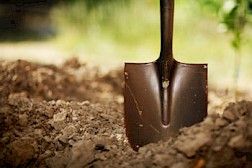 Compacted soil is another issue that is commonly found in Arizona landscapes. When the soil is compacted, air and water cannot penetrate through the layers to reach the roots. If the trees in your landscaping have thin canopies or demonstrate slow growth, then this could be the reason.
Compacted soil is another issue that is commonly found in Arizona landscapes. When the soil is compacted, air and water cannot penetrate through the layers to reach the roots. If the trees in your landscaping have thin canopies or demonstrate slow growth, then this could be the reason.
Compacted soil is addressed through breaking up the hard parts of the soil and adding organic materials such as sand and mulch to create pockets in the soil that allow air and water to get through to the root systems of plants.
Importance of Soil Testing
Although you might be able to diagnose hard or compacted soil on your own, other problems such as high salinity require testing. Soil testing gives you insight into exactly what needs to be done to promote the health of the trees and plants on your property so that a targeted treatment plan can be implemented to address the problem.
Tree Health and Care Tips
for the Arizona Climate
Trees are typically the largest plants in a landscape, and they provide the most benefits, such as serving as a primary focal point and providing shade. Trees also serve as shelters for native wildlife that are beneficial to the environment.
With proper care, trees can last for many years, which also make them a great investment for improving the value of your property.
There are several different types of trees that thrive in Arizona, and these all require specific types of care.
Evergreens such as acacias are popular options that are good at withstanding the changes in the climate that occur throughout the year. Since these plants can grow to extreme heights, they should always be placed in areas where they have room to expand.
Citrus trees also do well in Arizona landscapes, but you may need to watch out for high saline soil and poor watering schedules that lead to a decrease in the size of the fruit. Unwanted fruit must also be cleaned up right away to prevent issues with pests and sanitation.
Deciduous trees such as the Desert Willow are beautiful additions to the landscape. However, these tend to require more frequent watering, and care must be taken with pruning to encourage proper growth.
Tree Care Strategy
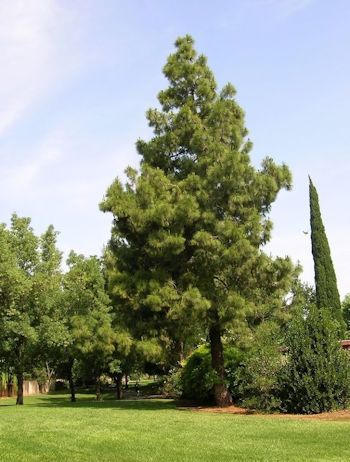 When developing your tree care strategy, keep in mind that even native trees may fail to flourish when they are planted in a different environment.
When developing your tree care strategy, keep in mind that even native trees may fail to flourish when they are planted in a different environment.
Trees that are placed in landscapes, parks and other cultivated areas are in an artificial environment because the soil and other environmental conditions may be very different from where they grow naturally.
For this reason, your tree care plan should include services such as fertilization and soil optimization to give the plants the nutrients and minerals they need to thrive.
Watch for Tree Disease and Pests
Always watch for signs that the trees on your property are in distress and failing to thrive. Signs include...
- Leaves turning yellow too early in the season
- Early leaf drop
- Slow growth
- Small leaves
During certain seasons pests are also a concern for Arizona trees. Be alert for signs that a tree pest infestation is destroying the trees on your property, such as bite marks in the leaves from cutworms.
Fungal infections can also affect the root systems of trees and cause them to die. While you can do your part to prevent fungal infections by avoiding overwatering and water pooling around the base of trees, established growth must be treated by a professional to preserve the health of the tree.

